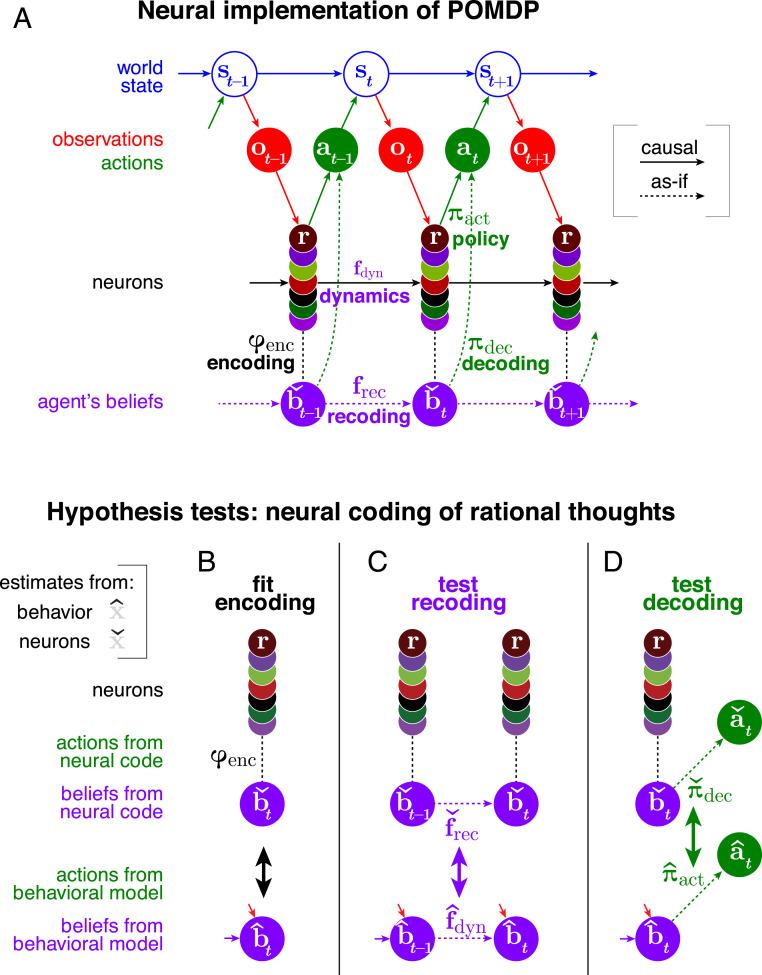Fig. 4.
Schematic for analyzing a dynamic neural code. (A) Graphical model of a POMDP problem with a solution implemented by neurons implicitly encoding beliefs. (B) We find how behaviorally relevant variables (here, beliefs) are encoded in measured neural activity through the function . (C) We then test our hypothesis that the brain recodes its beliefs rationally by testing whether the dynamics of the behaviorally estimated belief match the dynamics of the neurally estimated beliefs , as expressed through the update dynamics and recoding function . (D) Similarly, we test whether the brain decodes its beliefs rationally by comparing the behaviorally and neurally derived policies and . Quantities estimated from behavior or from neurons are denoted by up-pointing or down-pointing hats, and , respectively (SI Appendix, Table S1).

